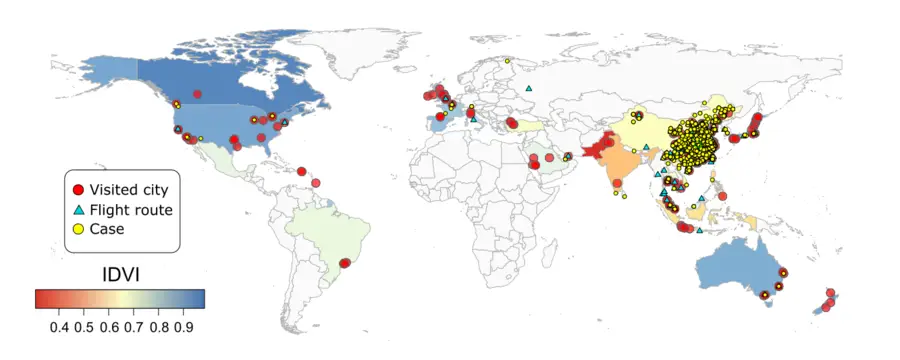
Of the nearly 1,344 Twitter users Bisanzio and Reithinger studied, 133 users traveled to 157 locations in China and 60 users traveled to 119 locations in 28 countries during the time period studied, including the U.S., Thailand, Saudi Arabia and Australia. This means that some of the users studied traveled to many locations in a very short period — increasing the probability of the spread of the virus.
“Based on our research, we anticipate new cases of coronavirus to soon be reported,” said Reithinger. “Our main message to health officials is that if your city is on the map or close to where the study’s Twitter users visited, draw up plans to sensitize the population and health providers to the possible emergence of 2019-novel coronavirus, particularly in patients with a history of travel to Wuhan.”
For more information and to read the full study, click here.
An update of this study was published in Geospatial Health in June. To read more, click here.
Learn more about our COVID-19 Research.
RTI International is an independent scientific research institute dedicated to improving the human condition. Our vision is to address the world's most critical problems with technical and science-based solutions in pursuit of a better future. Clients rely on us to answer questions that demand an objective and multidisciplinary approach—one that integrates expertise across social, statistical, data, and laboratory sciences, engineering, and other technical disciplines to solve the world’s most challenging problems.
For more information, visit www.rti.org.
